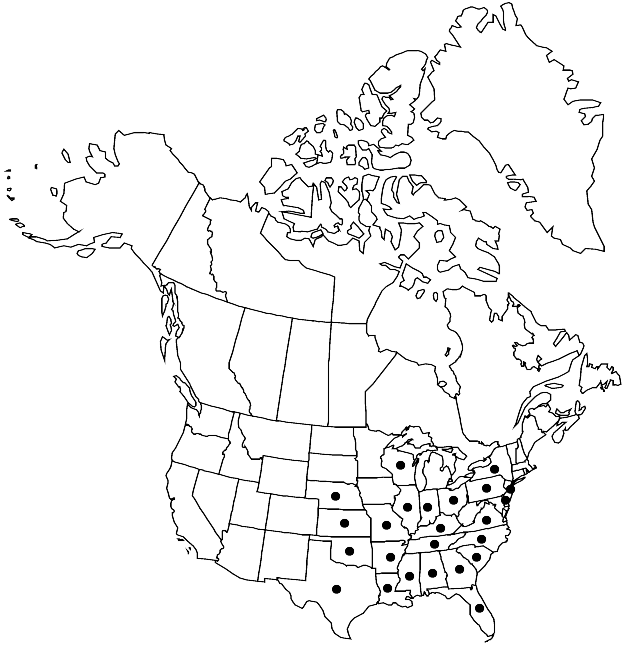Thelia lescurii
in A. Gray, Manual ed. 2, 660. 1856.
Stems ascending, sometimes weakly creeping, sparsely and irregularly branched, lightly tomentose, branches irregularly branched; paraphyllia not seen; pseudoparaphyllia foliose-ciliate. Stem and branch leaves ± similar, 0.8–1 mm; margins plane or erect to incurved, stem-leaf margins short-ciliate basally, branch leaf margins ciliate-papillose; apex broadly acute to obtuse, acumen erect, apiculate; laminal cells rhombic nearly throughout, 42–22 × 7–9 µm, papillae usually 3–6-branched. Seta 0.8–1.7 cm. Capsule 1.5–3 mm; operculum 0.5–1 mm. Calyptra 2 mm. Spores 10–16 µm.
Habitat: Sandy soil, road banks, soil over rock (granite, limestone, sandstone), base of trees, rotting logs
Elevation: low to moderate elevations (50-600 m)
Distribution

Ala., Ark., Del., Fla., Ga., Ill., Ind., Kans., Ky., La., Miss., Mo., Nebr., N.J., N.Y., N.C., Ohio, Okla., Pa., S.C., Tenn., Tex., Va., Wis.
Discussion
Plants of Thelia lescurii are generally larger than in the other species of Thelia and almost always grow on soil or thin soil over rock. They have mostly ascending, sparsely and irregularly branched stems that are weakly tomentose because only those parts of the stems in contact with the substrate have tomentum. The branches are thickened, often clavate-shaped, and irregularly branched. This combination of features, along with the ascending stems, gives the plants a compact aspect quite different from that of T. asprella or T. hirtella. Thelia lescurii could be confused in the field with Myurella because both occur on calcareous soil, have a similar color, and smoothly terete-foliate stems and branches. However, the leaves of Myurella have short, double costae and laminal cell papillae that are considerably lower in height.
Selected References
None.
Lower Taxa
"-fid" is not declared as a valid unit of measurement for this property. "spurred" is not a number.
